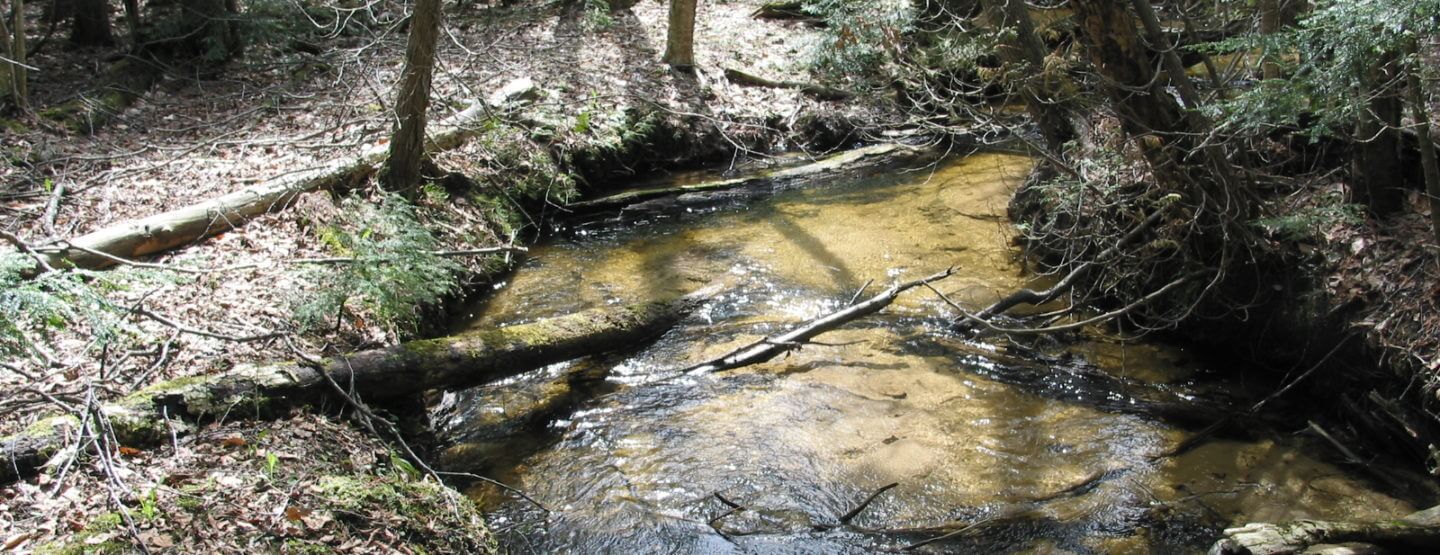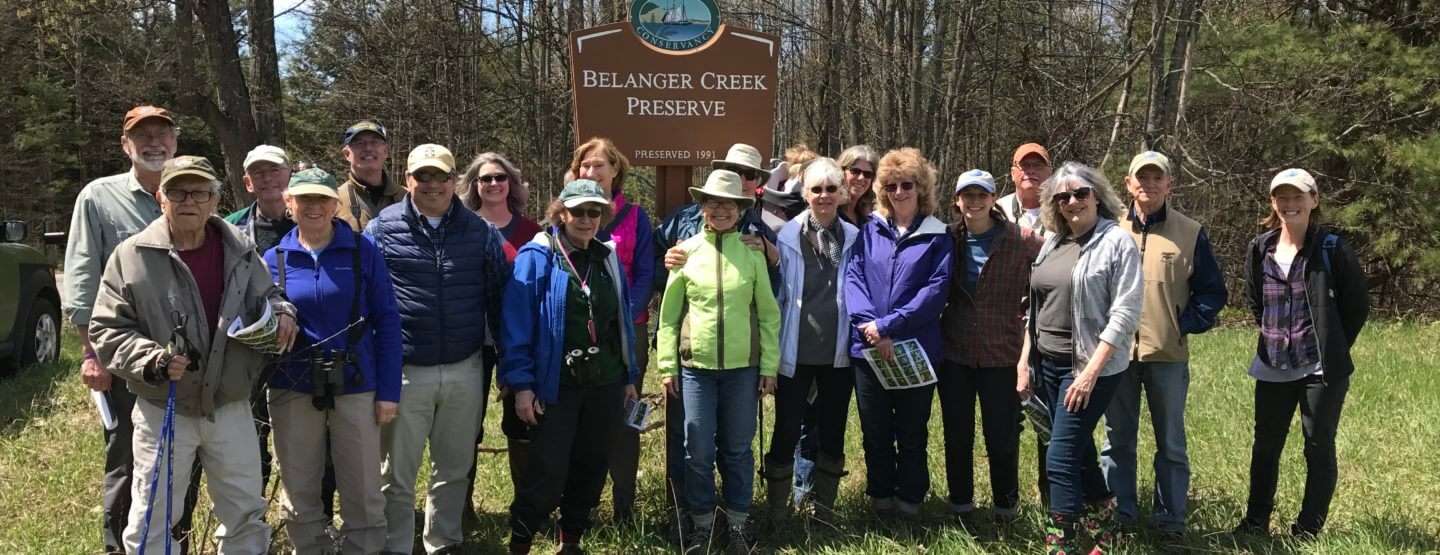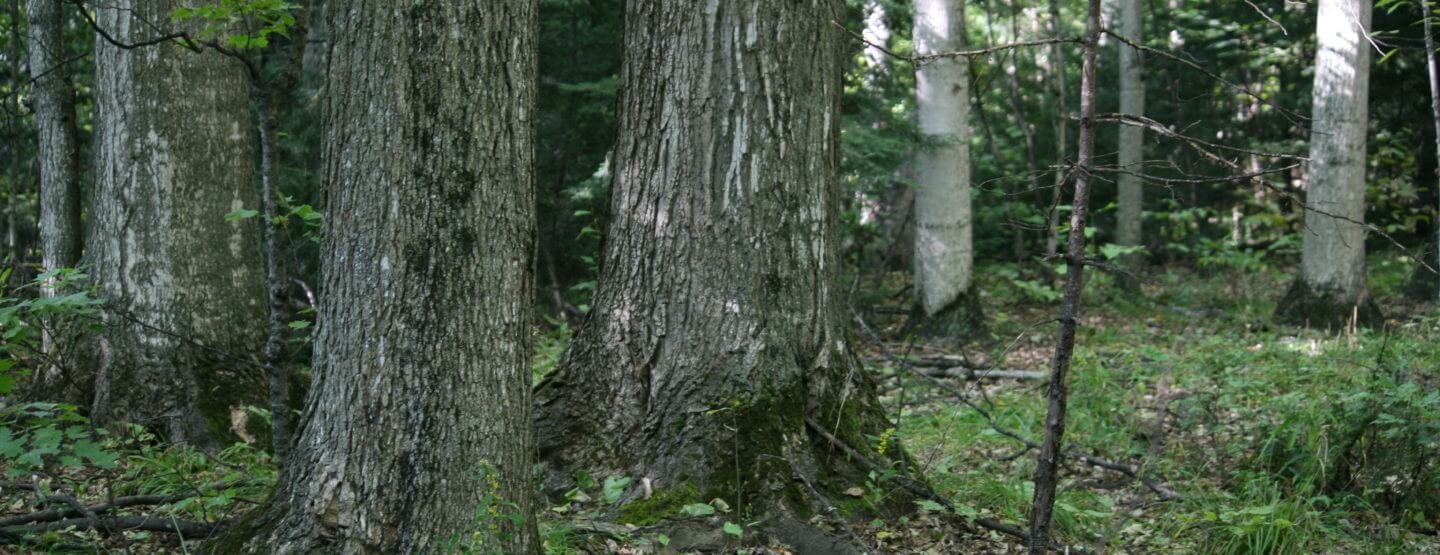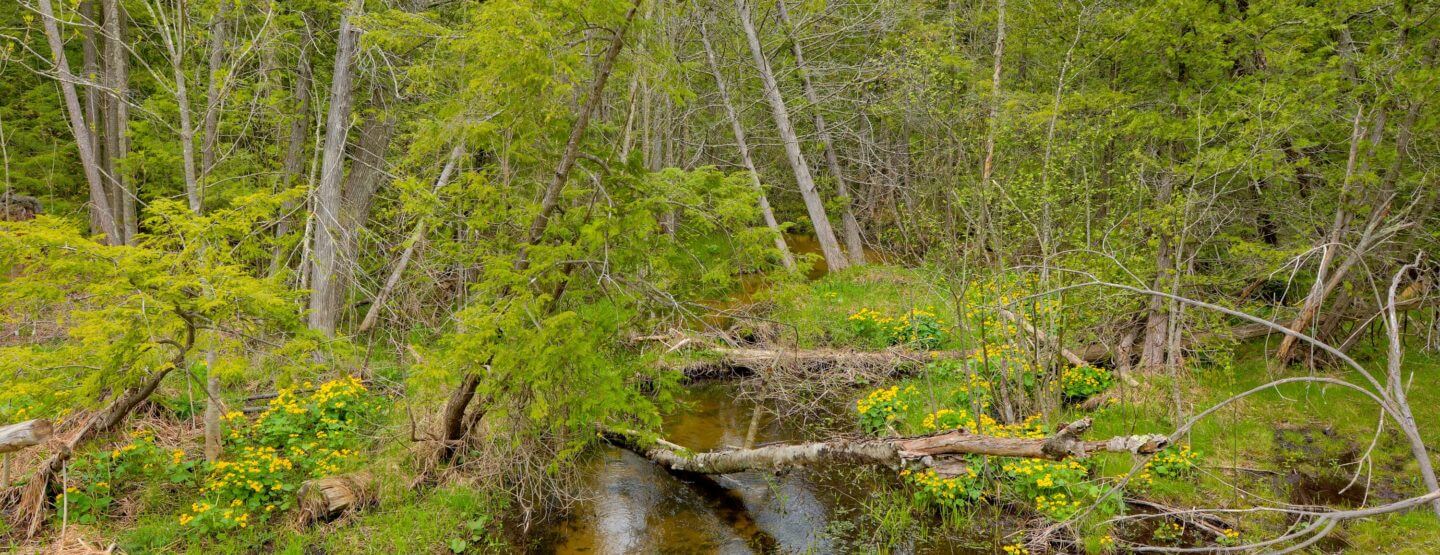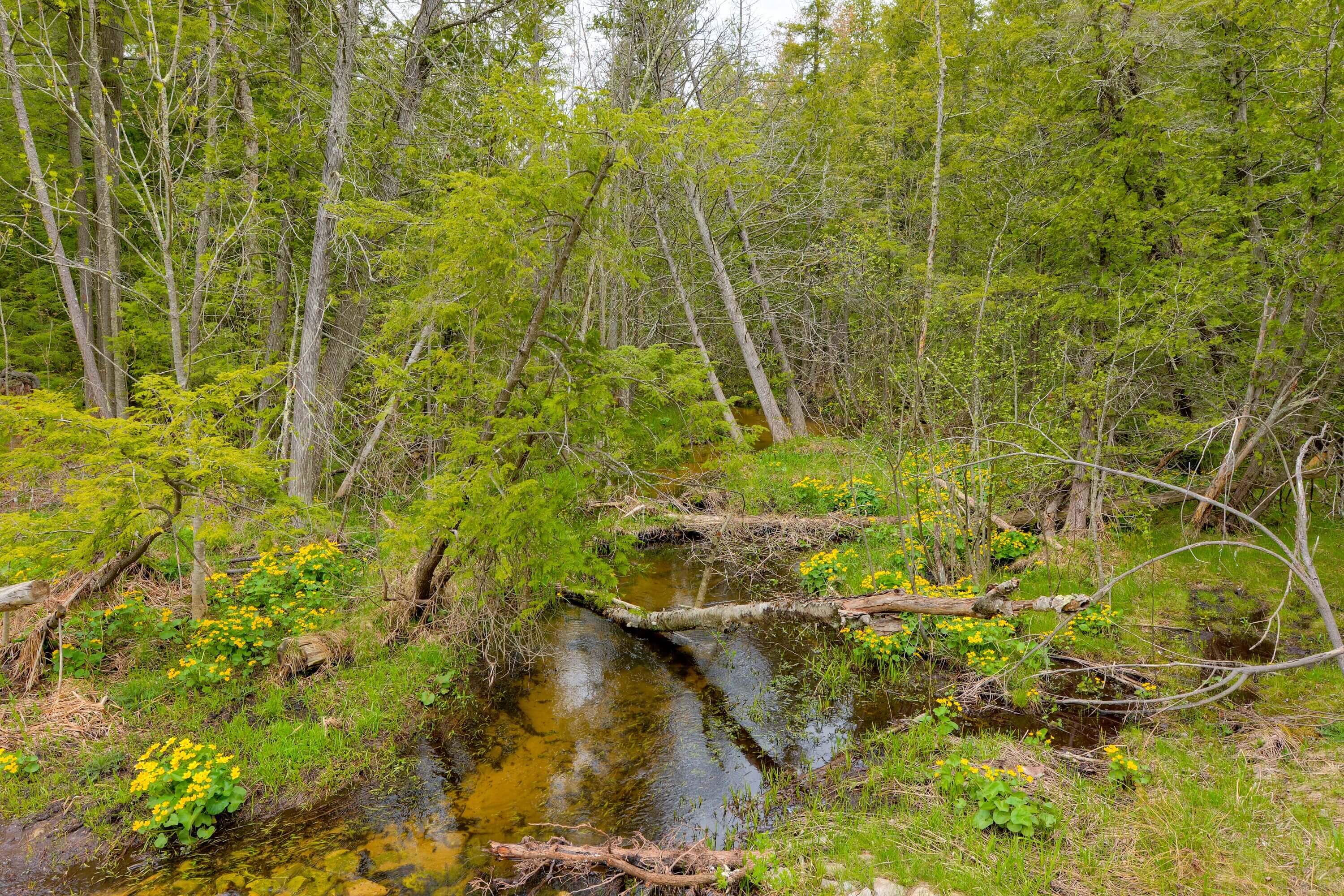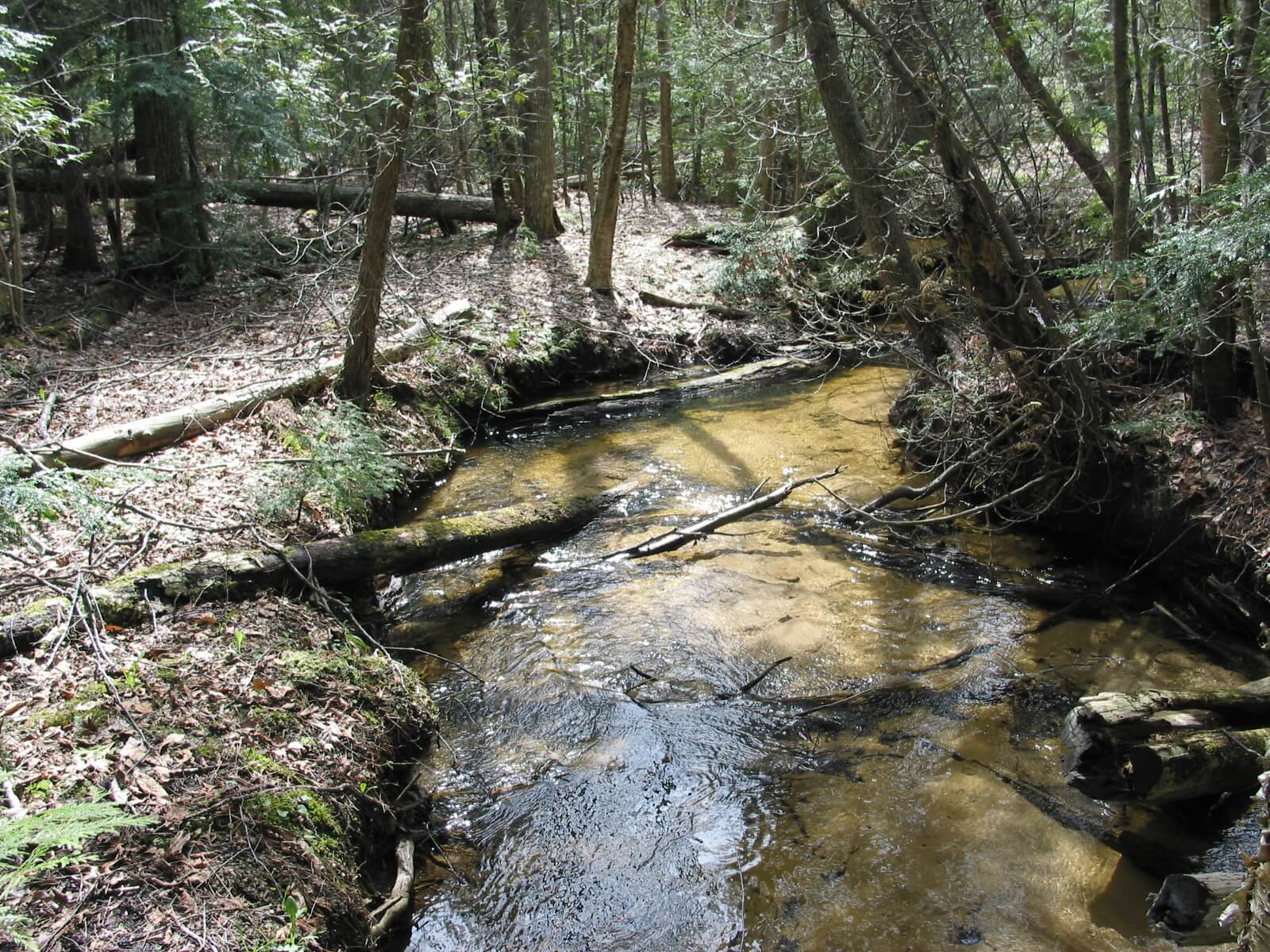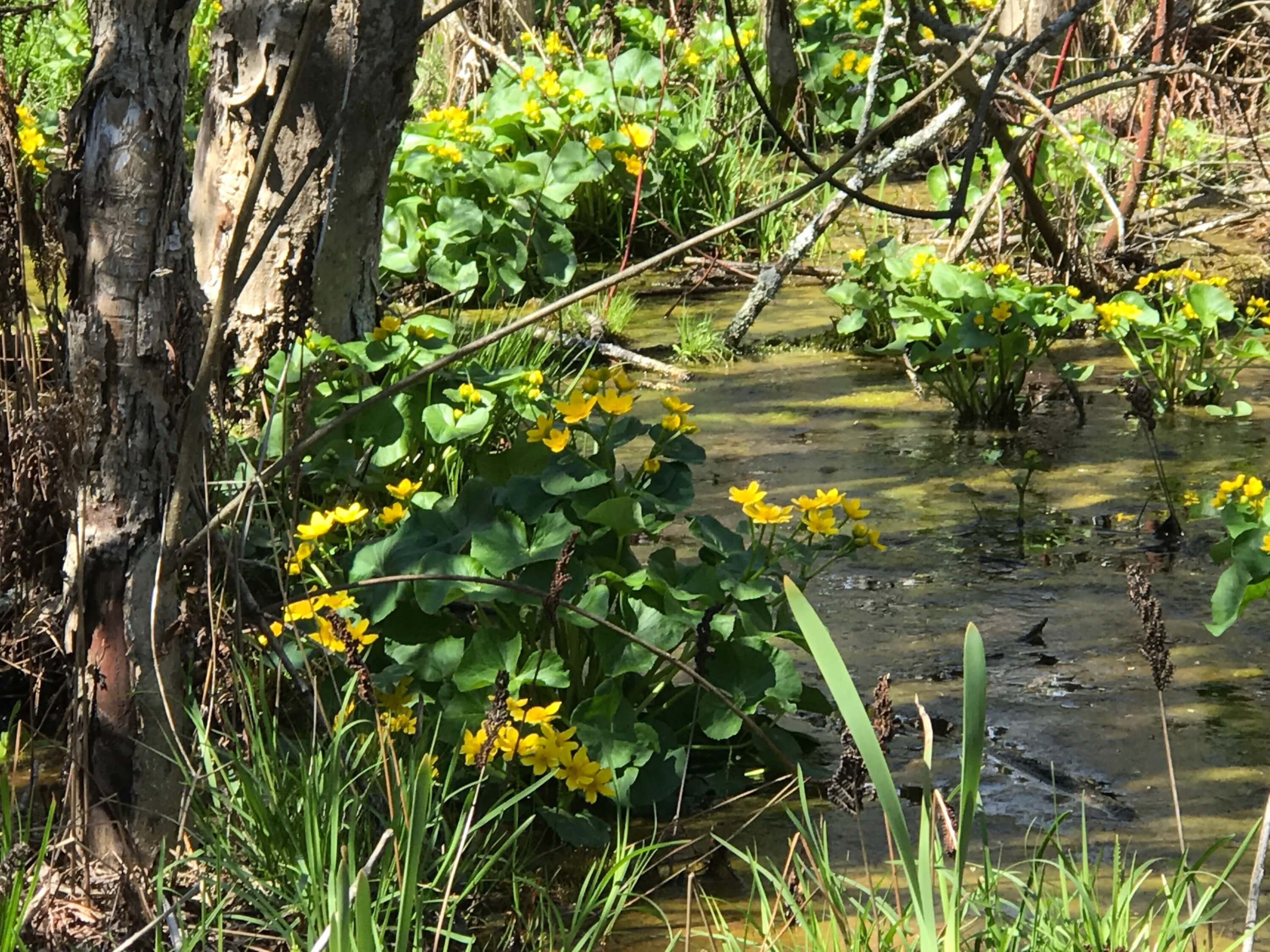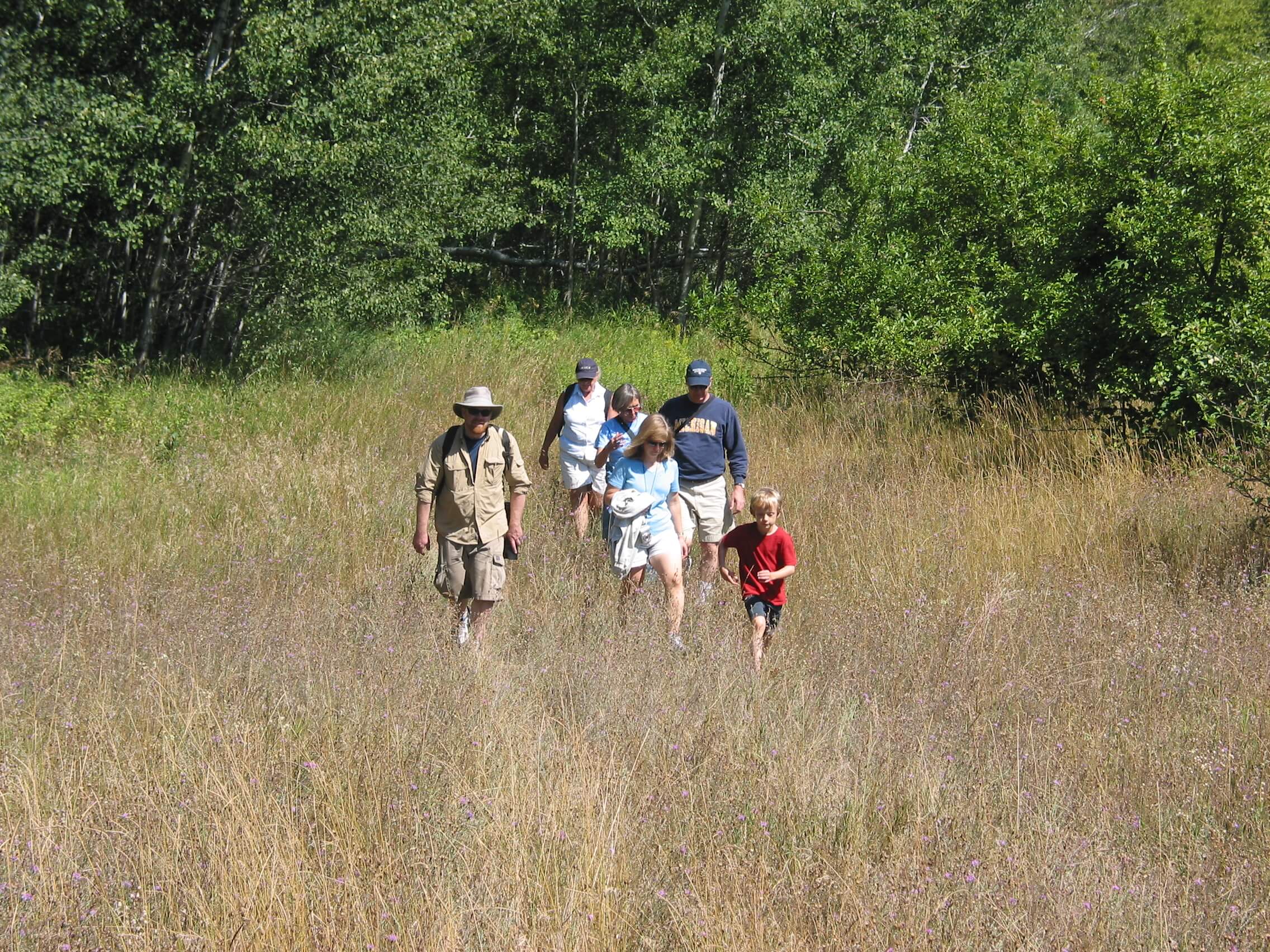Belanger Creek is an Ecological Powerhouse near Suttons Bay, with 2,800 Feet of Stream Corridor and Habitat Extraordinaire. A floristic survey conducted here documented an astounding 170 species, including 30 wildflowers. Come spring, the steep hillsides are full of trillium while sunny marsh marigolds line over a half-mile of protected stream frontage. Three ecosystems host songbirds and raptors, fox and deer. A rich conifer swamp with giant cedars, an old field that is a leftover relic from farming, and a beech-sugar maple, hemlock forest are all present. Six seeps and 11 springs feed into Belanger Creek, and the surrounding 5,600 acres all drain into the stream. Needless to say, protecting Belanger Creek is integral to the health of Grand Traverse Bay.
Trails
Belanger Creek Preserve contains no trail system. We recommend that you see it on one of our docent lead hikes. Visit our Hikes and Events page to find out about upcoming hikes on our Natural Areas.
However, the Grand Traverse Band of Ottawa and Chippewa Indians has constructed a boardwalk along Peshawbestown Road along the border of the Preserve. From it one can take in amazing views of the wetlands, spring wildflowers, birds and other wildlife.
A note of caution: walking through the lowland near Belanger Creek can be difficult because of fallen trees and stream crossings. Using walking sticks may help. Beware that because we do not have established trails we are likely to encounter challenging situations. The steep ridge separating the lowland from the hardwood forest can be difficult to navigate for some. Docents will always try to choose paths that offer less difficulty than others, but some areas cannot be avoided. Hikes into the interior are best done on a docent-led hike.
Features
Brown and brook trout swim under a lowland canopy of hemlock, cedar, and white pine. There are yellow birches, too, whose bark yields a sharp wintergreen taste. Upland you find a hardwood climax forest, including ash, sugar maple, and basswood. Look for shaggy-barked ironwood in the under story. Ironwoods are very tolerant trees. They are able to survive in low-light conditions. Ironwoods are also short-lived and seldom reach a diameter exceeding eight inches.
Unlike the ironwood, aspen require a sunny habitat. They are one of the first species to pop up in a new forest. The huge stands of aspen in these woods are clones, sharing a root system and identical genes. As natural forest succession occurs, aspen will die leaving no viable offspring. That’s because the canopy will not allow in enough sun for aspen saplings to survive.
Creatures such as weasels, badgers, minks, porcupines, ruffed grouse, and snowshoe hares revel in the shady understory. Higher up, a lucky observer might see indigo buntings or barred owls. One hike may turn up 30 species of wildflowers. Among them: the yellow lady’s-slipper and innocuous goldthread, which hides its thin, bright roots underground. Catch the cotton falling from the sky—white hairs protect dispersing aspen seeds.
- Brown and brook trout in Belanger Creek
- Hemlock, cedar, white pine, yellow birches, aspen, ironwood
- Yellow lady’s slipper, gold thread, marsh marigolds
- Indigo bunting, barred owl, eagles
- Large variety of fern species
Plants
A Belanger FQA and Summary is available here. The FQA, or Floristic Quality Assessment, tells the story of the types and quality of flora at Belanger Creek Preserve.

